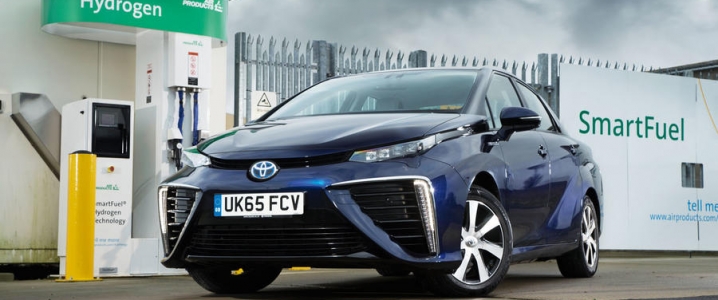By Jon LeSage
Tech giants like Apple and Waymo, along with carmakers such as General Motors and Tesla, are counting on autonomous vehicles becoming the norm in auto manufacturing and mobility services.
But how long will it really take to reach public acceptance and mass adoption?
These four companies, along with Daimler, Didi Chuxing, Ford, Uber and others, are envisioning a day when “robotaxis” — shared, electric, automated ride services — will take off with customers living in increasingly dense and crowded cities around the world.
Amazon, UPS, Volvo Trucks, FedEx, and trucking companies, are investing in automated systems for efficiently moving freight. Passenger car and commercial truck automation will also help automakers to comply with government regulations.
Yet the battle continues for making sure the technology is safe and economically viable. The classic questions remain: What are the liability and regulatory issues that have to be cleared before mass production and adoption could be viable? How likely are consumers and fleets to become ready to switch over to autonomous vehicles (AVs) and let go of their traditional petroleum-powered cars and trucks?
For now, the answer appears to be that the process is going to be dragged out for several years.
Technology innovations continue to be released. Apple’s patent filing for its Peloton technology for shared self-driving cars illustrates that point. The new technology will give autonomous vehicles a “connector arm” to physically contact the vehicles in front of and behind them to share battery power.
Ride-hailing firm Lyft just acquired Blue Vision Labs and its augmented reality software. It’s part of Lyft’s self-driving division launched in July 2017. The company is becoming more competitive with arch-rival Uber in ride-hailing and ride sharing, with both companies expecting electric, automated cars to eventually provide most of those rides.
Analysts are watching how companies are facing the potential liability over fatal crashes, and how long it will really take before these issues are resolved and built into insurance policies. Uber is facing that issue after one of its self-driving cars on a test run killed a pedestrian in Arizona, in March of this year.
Tesla faces legal issues over fatal car crashes tied to its semi-autonomous Autopilot system. As for fully-autonomous Tesla cars, the company is also taking a more cautious approach.
Chief Executive Officer, Elon Musk recently tweeted that the option for the AV technology, once it will be approved by government officials, will still be available for those interested in it, but the company won’t be advertising it for now as it “was causing too much confusion.”
The U.S. government would like to clear up some of this confusion by adopting and enforcing unified metric measures. Makers of autonomous vehicles will need to use a better yardstick to show that their AVs are safe, according to Derek Kan, undersecretary for policy at the U.S. Department of Transportation.
Kan thinks that the metrics typically used by companies like Waymo and GM — miles driven and the frequency of human intervention — are far from being enough.
During a conference this week in Washington, the undersecretary said that the data is flawed. One issue is that all miles reported aren’t defined the same way. Navigating through crowded streets in cities like New York is far more challenging than cruising down an open highway.
As for the role that engineers are playing in self-driving car test runs, it can be influenced by the driving and engineering choices made by human participants. Their reports “don’t provide a very rich data set,” Kan said.
“We are now at that point where we’re saying ‘help us think through the right metrics,”‘ to prove that a car driven by artificial intelligence is at least as safe as a human driver, Kan said.
Gaining trust from industry and drivers is critical. Kan’s colleague, Transportation Secretary Elaine Chao, has repeatedly stressed the need for companies to create public trust in the still-developing industry. Chao’s concern is valid, with polls showing most Americans being unconvinced about the safety of AVs.
Polling shows many Americans are leery of autonomous vehicles, and a series of accidents and fatalities involving semi- and fully self-driving technologies has further heightened scrutiny.
Proponents of AV technology, including Waymo executives, have consistently made the case that adoption of AVs will greatly reduce the number of highway fatalities around the world. That implies most of the vehicles on roads will be autonomous, so the technologies — AV versus human-driven — won’t be clashing with each other.
Here’s a look at what market reports are saying about the future of AV technology, and when we might see them driving down our roads:
GM has big plans in place
GM was rumored to have plans to deploy thousands of self-driving electric cars over the next year with its ride-sharing affiliate Lyft. That may change as the two companies distance themselves from each other. That alliance may be taking place through GM Cruise and the carmaker’s Maven car-sharing division.
While the company won’t give details on when it will become a mass producer of AVs, the company wants to be the very first. “We expect to be the first high-volume auto manufacturer to build fully autonomous vehicles in a mass-production assembly plants,” GM CEO Mary Barra last December.
Trucks may see AVs roll out first
According to a study on fleets and mobility, the trucking industry will see the greatest disruption from autonomous systems over the next 5-10 years. “It will be about 50:50, autonomous and human-driven vehicles on the highway, so, on a trip from NY to LA, the truck will drive itself fully autonomously on the highways — basically, from the outskirts of one city to another. When they get to the distribution center at the outskirts, a human driver will physically join the vehicle to take it into the city,” said Steven Choi, Autonomy Product Lead at Uber.
Data transfer mushrooming by 2025: The study also predicts that data transfer capacity will mushroom in its next phase. Reaching Level 5, fully autonomous vehicles, that capacity will have to grow dramatically. It’s predicted that the amount of data uploaded to the cloud will expand from 30 gigabytes per month from advanced connected cars in 2018, to 1 terabyte of vehicle and sensor data per month by 2025 from autonomous vehicles.
Accurate mapping must be in place
Every road, highway, byway, bridge, and obstacle will need to be mapped out in GPS systems before AVs can be released on roads. Google’s Chris Urmson, says that autonomous cars need detailed 3D maps that capture all features of the road, including lane markers and traffic signs.
China isn’t leading the way
There are real regulatory roadblocks to pass through, and there’s no clear winner in which global market will be the clear leader. China sees itself as leading the world, but failed to make the top 10 of a KPMG study on countries best prepared to bring them in. The U.S., Germany, U.K. and the Netherlands have been the real leaders in development of the technology. Asian countries are catching up and have been enacting similar legislation to bring AVs safely to their roads.
Source: Oilprice.com








